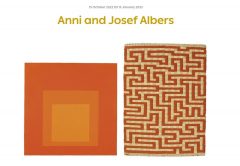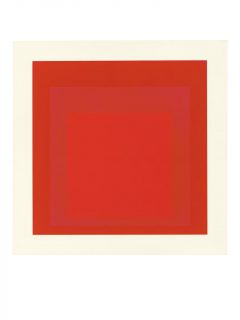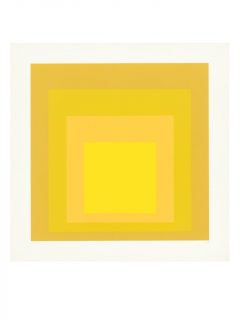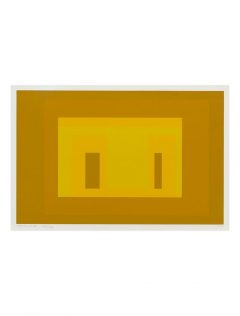Kunstmuseum Den Haag;
"Anni and Josef Albers"
October 15, 2022 - January 15, 2023

The Kunstmuseum Den Haag presents the first exhibition ever in the Netherlands to examine the life and work of Anni and Josef Albers. The art and inspiring teachings of this famous artist couple had an inestimable impact on the development of modern art.
Featuring over 200 works - including textiles, paintings, graphic art, photographs, furniture and drawings - this exhibition shows how Anni Albers (1899 -1994) evolved into a true pioneer of modern textile art, and highlights the process of artistic development Josef Albers (1888-1976) underwent which culminated in his internationally renowned Homage to the Square series which comprises innumerable colour studies in a square format.
These two European artists, who were born in Germany just before the turn of the 20th century, originally discovered the richness of South America’s ancient cultures while in the U.S.A. As teachers, they tried to convey to their students the cultural importance of the various utilitarian objects and artistic treasures produced by the cultures they revered. At the same time, those cultures continued to profoundly influence their own art. The rich textile traditions deepened Anni’s knowledge and ideas, while Josef’s compositions were inspired by the architecture of Mexico and Peru.
Josef and Anni met at the acclaimed Bauhaus in 1922. It was there that they developed a lifelong personal and professional relationship. The couple married soon afterwards, and as the Nazis rose to power, they decided to flee Germany and continue their lives as artists and teachers in the United States.
Anni Albers: Founder of Modern Textile Art
At the start of her training, like most women at the Bauhaus, Anni Albers was forced to focus on weaving. She reluctantly complied, but once she found herself in the textile workshop her disappointment quickly transformed into great enthusiasm for the versatility of the medium. She experimented with various techniques, introducing weaving patterns as an explicit element of her compositions, and combined jute and cotton yarn with metal thread or synthetic material like cellophane. With her unconventional use of materials, her innovative style and her efforts to achieve recognition of weaving as a visual art, Anni Albers became one of the founders of the modern textile art movement.
Josef Albers: the impact of colour
Josef Albers devoted his working life to studying the physical and emotional impact of colour, initially producing geometric compositions in sandblasted glass. Later in his paintings he developed a unique abstract idiom that is all about the visual interaction of colours. These experiments eventually led to his now-famous series of paintings and graphic works entitled Homage to the Square, a seemingly endless serious of harmonious colour combinations.
Teaching
Josef and Anni Albers continued teaching to an advanced age at various educational establishments. Josef described their main ambition as teachers as being able ‘to open eyes’. They encouraged new generations to open their eyes to the wonders around them: from nature to culture, form to colour. Their former students, fellow teachers and other close contacts include famous names like sculptor Ruth Asawa, dancer Merce Cunningham, composer John Cage, and painter Robert Rauschenberg.
Exhibition
In order to illustrate the versatility of the work of Anni and Josef Albers, Kunstmuseum Den Haag currently has a collection of some 200 works on display. This selection features some of the finest work by both artists, displayed both chronologically and thematically, starting with their own training at the Bauhaus, their departure for the revolutionary Black Mountain College in the United States, the inspiration they drew from pre-Columbian culture and finally their own enduring impact on modern art.
This exhibition also shows how the life and work of this artist couple are closely interwoven. Although they both worked with different materials, they shared the same attitude to life, plus the same artistic vision, curiosity about the unknown and sources of inspiration. They both focused on experimentation, and the challenge of creating the most innovative compositions on the basis of self-imposed restrictions in terms of colour, form or use of materials.
Inspired by Pre-Columbian Culture
The museum also focuses considerable attention on the influence of pre-Columbian culture on the work of both Anni and Josef Albers. During trips to countries like Mexico, Chile and Peru they discovered the beauty and quality of the cultures of long-gone civilisations that existed before European colonisation. Besides showcasing the clear influence on their work, the museum also displays several examples of ancient pre-Columbian sculptures as well as textile fragments from the Albers’ personal collection.


